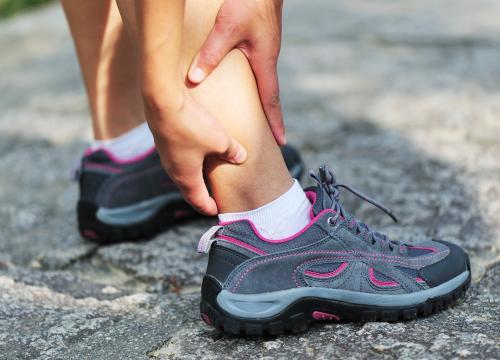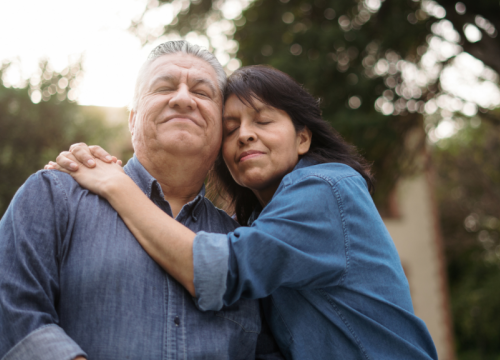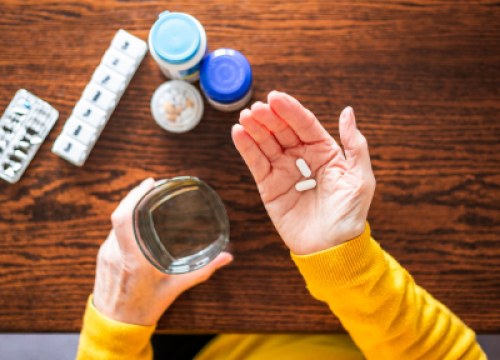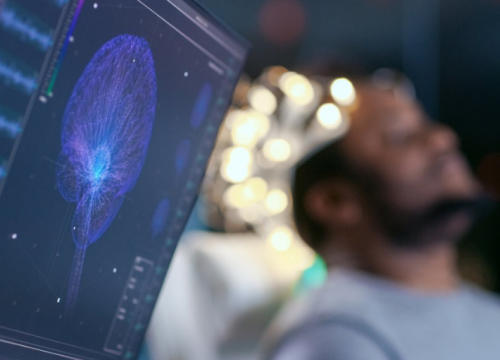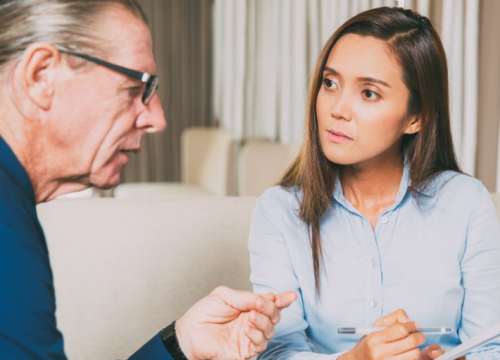As you know, Parkinson’s disease (PD) affects many body systems, not just movement. This includes the autonomic nervous system — that is, the part of the nervous system that controls “automatic” bodily functions such as heart rate, blood pressure, sweating, sexual function and both gastrointestinal and urinary function. These can be among the most serious and complex issues faced by people with PD.
Constipation, cramping and bloating are all common among people with Parkinson’s. These issues can be caused both by the disease itself and by the medications used to treat it. The good news is that there are steps that you can take to lessen its impact on your life.
Stomach Problems
Impaired ability to empty the contents of the stomach, called gastroparesis, is a potential complication of PD. This may produce a bloated sensation and cause you to feel full even if you have eaten very little. Sometimes nausea may develop.
Failure of the stomach to empty in a timely fashion may also impair or delay the effectiveness of PD medications, especially levodopa. Levodopa is absorbed from the small intestine and cannot get to its destination if it is trapped in the stomach.
Unfortunately, treatment of gastroparesis in PD has not been extensively studied, and there are not many treatment options. Domperidone is an effective medication, but it is not available in the US. FDA approved Duopa®, a form of levodopa designed to be delivered directly into the small intestine, may be helpful for some people experiencing gastroparesis. New levodopa delivery methods that bypass the stomach might help in the future, such as a skin patch, supplemental treatment with DBS, sublingual, or subcutaneous agonists.
Constipation
Constipation means difficulty passing stools (bowel movement, feces), a decrease in the number of stools, or both. It is often accompanied by one or more of the following symptoms:
- No stool (bowel movement) for days
- Distention (bloating) of abdomen, cramping, a feeling of pressure in the lower abdomen
- Straining to eliminate
- Incomplete evacuation of stool
- Hard, pellet stools
Constipation can be acute (sudden onset of short duration) or chronic (persisting for several weeks or longer). In PD, constipation is likely to be chronic. When constipation is severe, the stool stays in the colon and “backs up”, causing a condition called impaction.
Most healthcare providers describe constipation as having less than three bowel movements a week and recommend treatment after three days without a bowel movement, but everyone is slightly different. The frequency of bowel movements depends on what you have been eating and drinking, and the unique functioning of your own body. If you are experiencing fewer than three bowel movements in a week or have any of the symptoms listed, talk to your healthcare provider.
Why Do I Get Constipated?
We are still learning about constipation in PD and why it happens. Here is what we know:
Parkinson’s Disease
The same changes that occur in brain cells in Parkinson’s disease may also occur in nerve cells in the spinal cord and the intestinal wall. These changes may slow down the muscles that push food through the intestines.
Medications
Medications used to treat PD — in particular, the class called anticholinergics and the medication amantadine, used to treat dyskinesia — are known for causing constipation. If you are on these medications, your healthcare provider may be able to reduce your dose or switch you to a different one. But for some people, the benefits of the medication outweigh the possibility of constipation.
Decrease in Physical Activity
Because people with Parkinson’s disease experience difficulty with their movement, they often become less active. People with PD who increase their movement experience better overall functioning, which includes their digestive system.
Decreased Water Intake
Many people with Parkinson’s disease limit their fluids to avoid making frequent trips to the bathroom. When a person drinks less liquid, the gut may not have the lubrication it needs to have a bowel movement, which contributes to constipation.
Genetic Predisposition
It is possible to have a family predisposition to constipation. Ask family members what solutions work for them. Your body may respond to the same strategies.
Individual Body Chemistry
Genetics aside, you are unique. Pay attention to your body and what is normal for you.
Preventing Constipation
Will your constipation get better? It is possible, but it depends in part on your own efforts.
Of course, your healthcare provider and the medications he or she recommends play an important role. Still, constipation may persist despite your doctor’s recommendations. That’s where you come in.
It is critical to put a daily plan in place — one that can even prevent constipation before it begins. This is called creating a bowel program - Here are some strategies:
- Drink a lot of fluid (i.e., at least eight 8-oz glasses, excluding caffeine and alcohol, which act as diuretics and can aggravate constipation). It can be especially helpful to drink warm liquids, such as flavored sparkling waters or lemonade, on rising and with breakfast, as warm liquid and food start bowel activity.
- Eat meals at the same times each day.
- Increase your fiber (e.g., cooked dried beans or fruits and vegetables with edible skins).
- Eat more foods that create bulk (e.g., whole grains and vegetables).
- Minimize your intake of low fiber starchy foods (e.g., breads, cookies, cake) or avoid them completely. Starchy foods do a great job at plugging up the digestive system!
- Try to establish a relaxed, regular time of the day for bowel movements. (About 1/2 hour after a meal is best as there is normally greater bowel activity at this time.) However, it also will help to train yourself to “honor the urge” to have a bowel movement. It may not always occur first thing in the morning or only at home!
- Be aware that the natural position for evacuating the bowel is squatting. Raised toilet seat devices may aid mobility but are not ideal for bowel function. Try hiking your feet up on a small bench while sitting on the toilet.
- Exercise more. Walk, dance, ride bikes or swim.
Keep in mind that what works for one person may not work for another. You are unique. Pay attention to your body’s individual habits and needs.
The best way to do this is to keep an activity log or diary, where you can keep track of when you experience constipation. Record what else happened that day — what you ate, if you exercised, when you took medications — and look for patterns. This will help you figure out what triggers your constipation, how long it lasts, and what it responds to under varying circumstances. Then take steps to help prevent the constipation.
It may take trial and error, but with time (can take weeks to months) and effort, you can begin to understand what works for you.
Managing Constipation
If you have tried the tips above but they did not work, what should you do next? The primary goals will be to manage your symptoms, avoid complications (such as impaction, hemorrhoids and a dependence on laxatives), and prevent future constipation.
Treatments fall into two categories: over-thecounter and prescription therapies. Remember: consult with your healthcare provider before deciding on how to treat your constipation.
The best treatment for constipation will vary from person to person, taking into account a variety of factors, including: other medical condition(s), medications or allergies that impact your treatment, the cost of treatment, the type of treatment used, how often the treatment must be taken/done in a day and your own convenience and preference.
Over-the-Counter Products
Over-the-counter treatments for constipation can be purchased at your local pharmacy. There are several categories listed on the following pages, all of which work in different ways. They are offered in a variety of forms including capsule, powder, granule, syrup, gum, tablet, liquid and wafer.
The best choice for you will depend on personal preferences and how your body responds. Preferred products are those that mimic the way the body works normally, i.e., by increasing bulk, fluids or lubricants in the intestines.
It is important to note that stimulating laxatives, enemas, suppositories and combination products create dependence and are considered a last option, and should be used only when all others have been exhausted. Here are some things to keep in mind before selecting any products to address your constipation
• Relatively mild laxatives may be used while establishing a bowel program, but they are NOT a replacement for diet and bulk formers. Use them sparingly while you continue with your program. All laxatives should be used with caution. They activate the bowel by chemical irritation. Long-term use may actually harm the bowel.
• The bowel can easily become dependent on enemas. We recommend that you use enemas only when nothing else works.
• You may need to use suppositories while establishing a bowel program. If needed, use Glycerin daily or every other day. DO NOT use Dulcolax®, as it is habit-forming and irritates the bowel.
The following are listed in order of ease of consumption, cost, volume of therapeutic dose, taste. See list of common side effects.
Senna Teas (caffeine free)
These teas are herbal products whose use dates back to Arabian physicians in the ninth century! Drink a cup with dinner or in the evening and you should experience gentle, overnight relief from constipation in PD. Use senna teas with caution if you have a heart condition and are using Lanoxin® (digoxin) or a diuretic. It also comes as a capsule (Senna Leaf Smooth Move®).
Emollients (stool softeners)
These work by allowing more fluid into the fecal material. They contain “wetting agents” that improve the ability of water to mix with stool, which softens the stool. They do not stimulate bowel movements or increase bowel movement frequency. They make the stool softer and easier to pass. These can be used long term but should not be used in combination with products containing mineral oil. Some people with PD find the stool is soft, but difficult to pass as the muscles in the lower abdomen may not be strong enough or the momentum is slowed due to the disease. Examples include docusate (Colace® and Surfak®).
Bulk Formers
These work by creating bulk in the intestinal tract. Many types of fiber products bind with water in the intestine, keeping the water in the intestine to soften the stool, while adding bulk/volume to it. They must be taken with at least eight ounces of water. Bulk formers produce results in 12 to 72 hours and are safe for long-term use. Examples include guar gum (Benefiber®); inulin (FiberSure®); methylcellulose (Citrucel®); malt soup extract (Maltsupex®); polycarbophil (Fibercon®); psyllium (Konsyl®).
Lubricants
These work by lubricating the intestinal tract. They contain mineral oil, which coats the particles of stool, making it softer. Mineral oil does not stimulate a bowel movement or increase bowel movement frequency. Like emollients, it makes the stool easier to pass. They should only be used for short periods of time or periodically, as the oil can absorb some vitamins. They should not be used when taking warfarin (Coumadin®). An example is mineral oil (Fleet®). When purchasing, be sure to purchase just mineral oil, without any additives.
Osmotic Laxatives
These work by drawing fluids into the intestinal tract. They are indigestible, nonabsorbable compounds that assist in retaining water in the colon, thereby softening the stool. Osmotic laxatives produce a bowel movement within one to three days. They may cause gas initially, but this usually resolves. Osmotic laxatives are safe for long-term use. Diabetics need to be especially careful in their choice of an osmotic laxative as large sugar molecules (e.g. sorbitol) are sometimes used. Examples include lactulose (Kristalose®); polyethylene glycol 3350 (MiraLax®); polyethylene glycol (GlycoLax®); sorbitol.
Saline Laxatives
These contain magnesium, sulfate, phosphate or citrate. They cause a softening of the stool by retaining water in the colon. They generally work within several hours. In general, they should not be used on a regular basis as they can cause dehydration and electrolyte problems. People with kidney disease, congestive heart failure, or those who are advised by their healthcare provider to control salt and water intake should not take saline laxatives. For mild results, examples include magnesium hydroxide (Milk of Magnesia®), sodium biphosphate and sodium phosphate (Fleet®, Phospho-Soda®, Visicol®). For strong results, examples include magnesium sulfate (Epsom salt).
Stimulant Laxatives (Not for long-term use)
These should be used sparingly with PD and only after other remedies have failed. Among the over-the-counter laxatives, they are most likely to cause diarrhea and cramping. Chronic use can lead to colon damage. They work by causing the muscles of the small intestine and colon to propel their contents more rapidly. Some stimulant laxatives increase the absorption of water in the small intestine. Examples include bisacodyl (Dulcolax®, Correctol®); castor oil; casanthranol; cascara (Nature’s Remedy®) senna.
Enemas
Enemas stimulate the colon to contract and eliminate stool. They are useful in PD when there is impaction. In most cases, routine use should be avoided as they affect the fluid and electrolyte balance in the body. Soap suds enemas, commonly used in the past, should not be used as they can damage the rectum. Examples of common enema preparations include docusate sodium (Colace®), saline enema, microenema, tap water enema, mineral oil enemas.
Suppositories
A suppository is a “wax-like” form which is lubricated and inserted directly into the rectum as high as the finger can put it. Suppositories provide rectal stimulation to empty the bowel. Stool must be present in the rectum for suppositories to be effective. Suppositories must make contact with the inside wall of the rectum to work. They should be refrigerated until used or they can melt. Glycerin suppositories provide lubrication, while bisacodyl suppositories contain the stimulant laxative bisacodyl. Examples include bisacodyl (Dulcolax®) and glycerin.
Combination Products
These products combine two or three of the previously mentioned ingredients and stimulate bodily and intestinal functions. They can be convenient and effective. Those containing artificial stimulants should not be used in most long-term situations. Examples include casanthranol (Sof-Lax Overnight®); docusate (Peri-Colace®, Senokot®); glycerin; senna; senna and glycerin (Fletcher’s Laxative®); and senna and psyllium (Perdiem®).
Common Side Effects of Over-the-Counter Products for Constipation
Emollient (Stool Softeners)
- Skin rash
- Stomach and/or intestinal cramping Bulk Forming
- Skin rash or itching
- Difficulty swallowing
- Intestinal blockage
- Difficulty breathing
Lubricant
- Skin irritation surrounding rectal area
- Aspiration (medication sucked into lungs)
Osmotic
- Bloating
- Cramping
- Gas
- Increased thirst
- Nausea
Saline
- Confusion
- Dizziness or lightheadedness
- Irregular heartbeat
- Muscle cramps
- Unusual tiredness or weakness
Stimulants
- Belching
- Cramping
- Diarrhea
- Nausea
- Confusion
- Irregular heartbeat
- Muscle cramps
- Discoloration of urine (for cascara and/or senna only), e.g. pink to red, red to violet, red to brownish color
- Skin rash
- Unusual tiredness or weakness
Note: side effects very from person to person. Please consult your healthcare provider if you have concerns about any side effects listed.
Prescription Products
When over-the-counter remedies fail, your healthcare provider may recommend prescription products to treat constipation.
Right now, there are two remedies approved by the U.S. Food and Drug Administration (FDA). They are often available by generic name or trade name (the trade name product is generally more expensive).
- Lubiprostone (Amitiza): works by increasing stool water content. Side effects include headache, nausea, diarrhea, abdominal pain and vomiting.
- Linaclotide (Linzess): increases bowel movement frequency. Its most common side effect is diarrhea.
What’s Right for Me?
Your objective is to be as comfortable as possible.
Know What to Avoid
- Impaction (i.e., solid bulk of stool in the rectum that must be manually removed).
- Hemorrhoids (distention of veins in area of anus).
- Chronic dependence on laxatives.
- Complications from other diseases you have that can be worsened by treatments for constipation.
Know Your Normal Habits
- Assess your “normal” by logging your elimination habits versus your dietary intake, the fluids you consume and exercise for one normal week.
- Note any changes in your bowel movements early, so you can intervene sooner rather than later (consult your healthcare provider as appropriate).
Select the Right Management Plan
- Consult your healthcare provider. Discuss a trial and error process that considers your medical condition(s), all the drugs you take, and your preferences (form in which taken, frequency/ time of administration, taste, effectiveness, etc.).
Special Precautions
For your safety, consult your healthcare provider before taking any products. Of particular concern should be any of the following:
Over-using laxatives could create dependence.
Watch for:
- Signs and symptoms of appendicitis, which could include fever, abdominal pain, loss of appetite.
- Rectal bleeding from unknown cause.
- Intestinal blockage.
Be careful if you have any of these conditions:
- Colostomy: potential for diarrhea when bag fills quickly.
- Ileostomy: potential for diarrhea when bag fills quickly.
- Type 2 diabetes: some laxatives are high in sugar.
- Heart disease: straining to eliminate stool can strain the heart, and it may not be able to compensate.
- High blood pressure: some laxatives are high in sodium.
- Kidney disease: some laxatives have magnesium and potassium in them.
Swallowing difficulty: of concern would be aspiration of the laxative into the lungs causing pneumonia or blockage of the esophagus.
Living with PD can be challenging. Motor and non-motor symptoms impact daily life, but there are many things a patient can do to lessen this impact. Daily attention to bowel function is important to feeling one’s best and to avoid serious complications such as impaction. If you need further guidance, please contact your health care provider.
